Newly discovered animal species (2010 - 2020)
PART-1
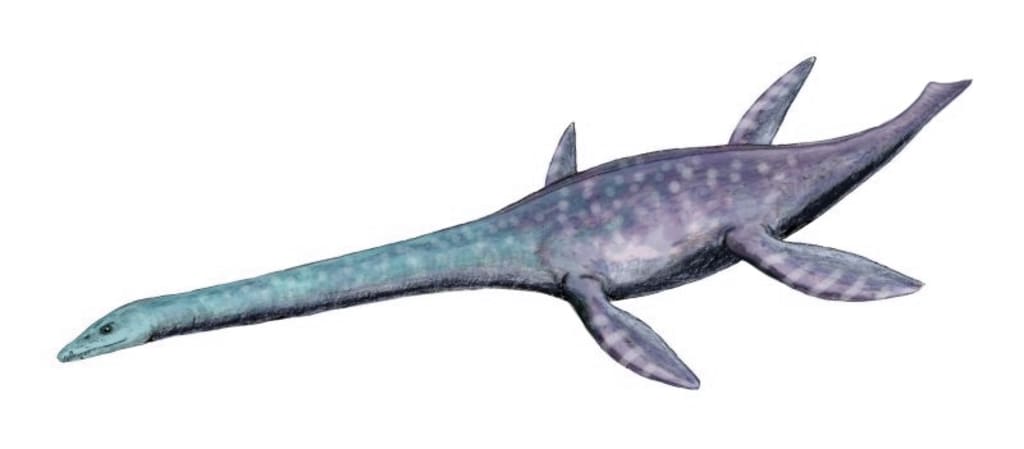
1. Microleo attenboroughi:
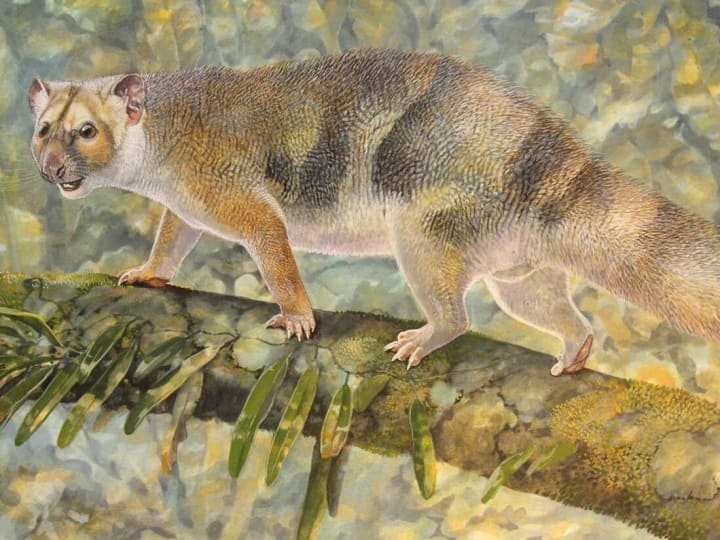
Microleo attenboroughi is an extinct species of marsupial lion that lived approximately 18 million years ago during the late Oligocene to early Miocene epochs in what is now Australia. It is commonly referred to as the "Micro Lion" due to its small size compared to other members of the marsupial lion family, Thylacoleonidae.
The species was formally described in 2016 based on fossil remains discovered in the Riversleigh World Heritage Area in Queensland, Australia. The fossils consisted of fragments of teeth and parts of the skull, providing valuable insights into the morphology and evolutionary adaptations of Microleo attenboroughi.
Microleo attenboroughi is estimated to have been about the size of a domestic cat, making it one of the smallest known members of the marsupial lion family. Despite its diminutive size, it likely possessed similar carnivorous adaptations to its larger relatives, including powerful jaws and sharp, blade-like teeth adapted for shearing meat.
The specific epithet "attenboroughi" honors Sir David Attenborough, a renowned naturalist and broadcaster known for his contributions to wildlife conservation and education. The choice of name reflects Attenborough's significant influence in promoting public awareness and appreciation of Earth's natural history and biodiversity.
The discovery of Microleo attenboroughi contributes to our understanding of the diversity and evolutionary history of Australia's unique marsupial fauna. It highlights the importance of the Riversleigh World Heritage Area as a rich fossil site that preserves a wealth of information about ancient ecosystems and the creatures that inhabited them millions of years ago.
Overall, Microleo attenboroughi represents an intriguing addition to the fossil record, shedding light on the fascinating evolutionary adaptations and ecological roles of marsupial lions in prehistoric Australia. Its discovery underscores the ongoing importance of paleontological research in unraveling the mysteries of Earth's ancient past and understanding the processes that have shaped the diversity of life on our planet.
2. Kaprosuchus saharicus:

Kaprosuchus saharicus is an extinct species of crocodile-like creature that lived during the Late Cretaceous period, approximately 95 million years ago. It belongs to a group of ancient crocodyliforms known as "notosuchians," which display a wide range of body forms and ecological adaptations. Kaprosuchus saharicus is characterized by its unique and distinctive features, which set it apart from other members of the notosuchian group.
The name "Kaprosuchus" is derived from Greek words meaning "boar crocodile," reflecting the animal's unusual combination of crocodile-like features with a pig-like snout. The species epithet "saharicus" refers to the Sahara Desert in northern Africa, where the fossils of Kaprosuchus saharicus were discovered.
Kaprosuchus saharicus was first described in 2010 based on fossil remains found in the Kem Kem Beds of Morocco. These fossil discoveries included fragmentary skull and jaw elements, as well as isolated teeth, which provided valuable insights into the anatomy and lifestyle of this prehistoric creature.
One of the most striking features of Kaprosuchus saharicus is its elongated and flattened skull, which resembles that of a modern-day gharial, a type of crocodilian with a long, slender snout adapted for catching fish. However, Kaprosuchus saharicus had a unique twist to its morphology with a series of enlarged, tusk-like teeth in its upper and lower jaws, giving it a distinctly "boar-like" appearance.
These specialized teeth, along with its elongated snout, suggest that Kaprosuchus saharicus may have been adapted to a specialized diet, possibly including a combination of aquatic prey such as fish and terrestrial prey like small dinosaurs or other animals. Its unique cranial morphology and dental adaptations indicate that it occupied a unique ecological niche within its Late Cretaceous ecosystem.
Despite its formidable appearance, Kaprosuchus saharicus was not the largest predator in its environment. It coexisted with other formidable predators such as large theropod dinosaurs like Spinosaurus and Carcharodontosaurus, as well as other crocodyliforms.
The discovery of Kaprosuchus saharicus adds to our understanding of the diverse range of crocodile-like creatures that once roamed the ancient landscapes of Africa during the Late Cretaceous period. Its unique anatomy and ecological adaptations highlight the remarkable evolutionary diversity that existed among prehistoric crocodyliforms and the complex ecosystems they inhabited.
3. Saccorhytus coronarius:
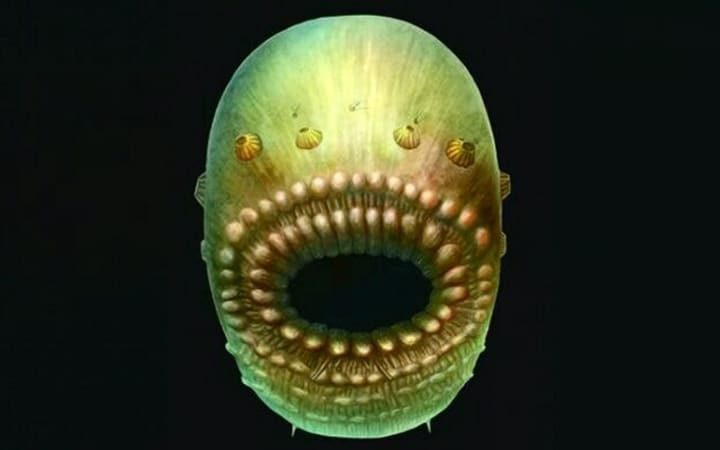
Saccorhytus coronarius is an extinct species of early microscopic animal known as a "bag-like" organism. It belongs to a group of creatures known as deuterostomes, which includes vertebrates (including humans) and other animals such as sea stars and sea squirts. Saccorhytus is of particular interest to scientists because it represents one of the earliest known deuterostomes, providing valuable insights into the evolutionary history of this diverse group of animals.
The species epithet "coronarius" refers to the distinctive crown-shaped features observed in some specimens of Saccorhytus, which resemble a coronet or diadem.
Saccorhytus coronarius lived during the Ediacaran Period, which occurred approximately 540 million years ago, making it one of the oldest known deuterostomes. Fossils of Saccorhytus have been discovered in the Doushantuo Formation in South China, a geological formation renowned for its exceptional preservation of early animal fossils.
Saccorhytus coronarius is characterized by its small size, ranging from 1 to 4 millimeters in length, and its distinctive morphology. It has a bag-like body with a symmetrical, somewhat flattened shape. The most notable feature of Saccorhytus is its large mouth, which occupies a significant portion of its body and lacks any specialized feeding structures such as jaws or teeth. This simple mouth opening suggests that Saccorhytus may have been a filter feeder, ingesting small particles of organic matter from the surrounding water.
Another notable feature of Saccorhytus coronarius is the presence of small conical structures surrounding its mouth, which resemble tiny spines or denticles. These structures, along with the crown-shaped features observed in some specimens, provide clues about the creature's ecology and lifestyle, although their exact function remains uncertain.
Saccorhytus coronarius is considered to be an early precursor to more complex deuterostome animals that emerged later in Earth's history. Its simple body plan and primitive features represent an important stage in the evolutionary transition from simple, microscopic organisms to the diverse array of deuterostome animals that inhabit the planet today.
The discovery of Saccorhytus coronarius highlights the significance of early fossil discoveries in understanding the origins and evolutionary relationships of major animal groups. By studying organisms like Saccorhytus, scientists gain valuable insights into the ancient origins of animal life and the processes that have shaped the diversity of life on Earth over millions of years.
4. Paedophryne amauensis:
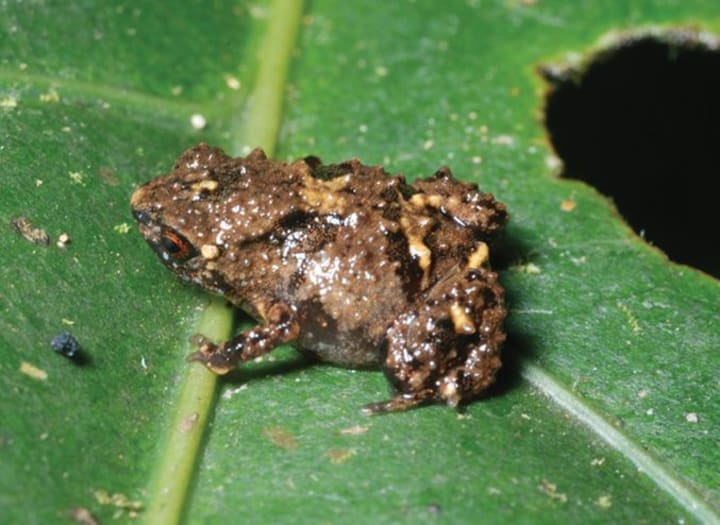
Paedophryne amauensis is a species of frog that belongs to the family Microhylidae. It is commonly known as the "Amau Forest Microhylid" or the "Goliat Frog." Paedophryne amauensis gained widespread attention after its discovery in 2009 due to its remarkably small size, making it one of the smallest known vertebrates on Earth.
This tiny frog was discovered in the rainforests of Papua New Guinea, specifically in the Amau region of the central mountains. It inhabits leaf litter on the forest floor, where it likely feeds on small invertebrates.
One of the most striking features of Paedophryne amauensis is its diminutive size. Adult frogs typically measure around 7.7 millimeters (0.30 inches) in length, making them smaller than a dime or a pea. This tiny size earned Paedophryne amauensis the title of the world's smallest vertebrate, a record it held until the discovery of another microhylid frog, Paedophryne swiftorum, in 2011.
Despite their tiny size, Paedophryne amauensis frogs possess the characteristic features of microhylid frogs, including a rounded body shape, short limbs, and a relatively large head. Their coloration is typically brown or gray, helping them blend in with the leaf litter on the forest floor.
The discovery of Paedophryne amauensis highlights the incredible diversity of life found in tropical rainforests, especially in remote and understudied regions like Papua New Guinea. It also underscores the importance of conservation efforts to protect the unique habitats where these tiny frogs reside.
Due to its small size and cryptic nature, Paedophryne amauensis faces threats from habitat destruction and deforestation, which are ongoing issues in Papua New Guinea and other parts of the world. Conservation efforts aimed at preserving the Amau region's rainforest ecosystems are crucial for safeguarding the habitat of this remarkable tiny frog and other endemic species.
Overall, Paedophryne amauensis serves as a reminder of the astonishing diversity of life on Earth and the importance of protecting fragile ecosystems to ensure the survival of unique and remarkable species like the world's smallest vertebrate.
5. Attenborosaurus conybeari:
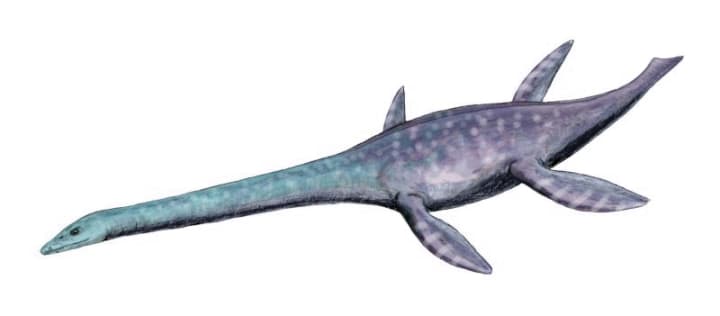
Attenborosaurus conybeari is an extinct species of marine reptile belonging to the group of long-necked marine reptiles known as plesiosaurs. It lived during the Early Jurassic period, approximately 200 million years ago. Attenborosaurus conybeari is named after Sir David Attenborough, a renowned naturalist and broadcaster, in recognition of his contributions to the field of natural history, and also after William Conybeare, an early 19th-century British geologist and paleontologist.
Fossils of Attenborosaurus conybeari were first discovered in the early 19th century in the UK, specifically in the Blue Lias Formation in Lyme Regis, Dorset. The Blue Lias Formation is well-known for its rich fossil deposits, particularly of marine reptiles from the Jurassic period.
Attenborosaurus conybeari was a relatively small plesiosaur, reaching lengths of around 4 to 5 meters (13 to 16 feet). It had a typical plesiosaur body plan, with a long neck, small head, and large flippers adapted for swimming in the ocean. Plesiosaurs are known for their distinctive swimming style, where they used their flippers to propel themselves through the water in a manner similar to modern-day sea turtles.
One of the distinguishing features of Attenborosaurus conybeari is its elongated neck, which likely allowed it to reach out and capture prey with its small, pointed teeth. Plesiosaurs like Attenborosaurus conybeari were carnivorous predators, feeding on a variety of small marine animals such as fish, squid, and other marine reptiles.
The discovery and study of Attenborosaurus conybeari have contributed to our understanding of the diversity and evolution of plesiosaurs during the Early Jurassic period. Plesiosaurs were one of the dominant groups of marine reptiles during the Mesozoic Era, occupying a wide range of ecological niches and playing important roles in marine ecosystems.
Although Attenborosaurus conybeari is relatively well-known compared to some other plesiosaur species, ongoing research and fossil discoveries continue to provide new insights into the biology, behavior, and evolutionary history of this fascinating group of marine reptiles.
SUBSCRIBE FOR PART 2 AND MORE VIDEOS
About the Creator
Enjoyed the story? Support the Creator.
Subscribe for free to receive all their stories in your feed. You could also pledge your support or give them a one-off tip, letting them know you appreciate their work.


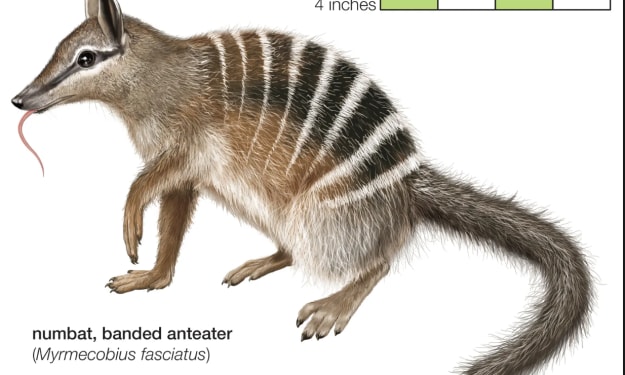



Comments
There are no comments for this story
Be the first to respond and start the conversation.